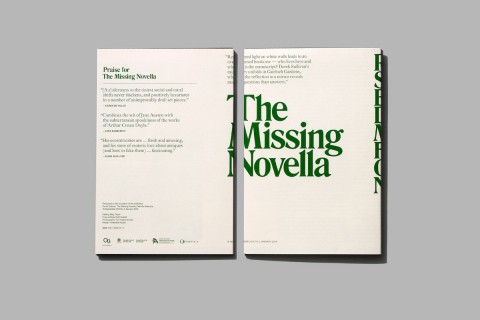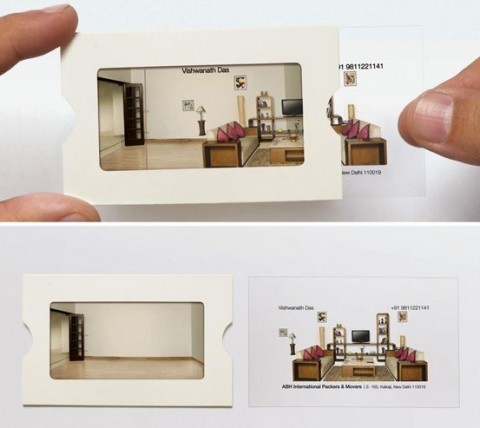
Editor’s note: Contrary to the stereotype, many designers have a pretty low opinion of themselves professionally. This isn’t something that’s immediately apparent, but any conversation with another designer invariably reveals an insecurity the person simply can’t shake.
For starters, they realize that most people – including family, clients and bosses – have only the tiniest understanding of what it is they do, and understandably so. They didn’t take the pictures, they didn’t write the copy… The only way to illustrate their contributions to a non-designer is by producing dozens of manuscript pages and a stack of photos stapled together, saying “this is what it would look like without me.”
Yet another reason for their dip in self-esteem? A deep, abiding sense that they simply don’t have the discipline required to stay on top of their projects. It seems like they’re always racing around trying to beat a deadline that seemed reasonable at the beginning – what on earth is wrong with them?
Guest columnist Todd Henry does every designer a tremendous service in the following piece: He reveals why we feel this way, and more importantly, what can be done about it.
………………
After a recent talk at a conference, I got into a conversation with a creative-services manager charged with leading a large internal team of creatives. After a few minutes, he confessed that he struggles personally with discipline, and that he notices the same pattern playing out with his team.
While team members typically meet their commitments to the organization, the process is often littered with missed cues, frustration, poor communication and unprofessional behavior. He said that it’s difficult to get them motivated to rally around the work.
Discipline is sometimes perceived as a “dirty word” because it’s interpreted as pushing through the muck, doing the unenjoyable activities first, and forgoing the chocolate cake for the steamed broccoli. However, I think this is a gross misunderstanding of the word.
Discipline simply means making an agreement with yourself… and keeping it.
That’s all. Nothing more complicated than that. The problem with discipline begins when we don’t understand which commitments are worth our effort, when we make too many commitments, when our commitments conflict, or when we are subject to the unclear commitments of others.
Creatives Make Too Many Commitments
Even great jugglers have a limit to the number of balls they can keep in the air. If you make too many agreements with yourself, you will eventually fail to keep some of them. This is often the result of “guilt work,” or things that we think we should be doing but really don’t want to. (Yes, there are things we should do that we don’t want to; it’s a part of life. I’m referring to discretionary commitments we make because we ought to rather than because we are charged with getting them done.)
This has a snowball effect on your confidence and energy for your work. You have to be careful about how many agreements you make with yourself and ensure that each agreement you make has a clear course of action. If you don’t, the ensuing guilt and shame from dropping balls, and the subsequent sense of loss of focus, will trickle down into all other areas of your life.
Take some time to consider all of the agreements you’ve made with yourself in every area of your life, and consider a handful of them you want to focus on first.
As you follow through on your agreements, even small ones, you will notice your focus and energy on the rise. I regularly clear my desk and make a project list of “guilt work” so that I can just get one or two neglected things done, and it makes all the difference in my level of clarity.
Creatives Make Conflicting Agreements
Another problem is that creative pros sometimes make conflicting agreements, such as committing to a project that directly steals time and energy from another one they’re already committed to, or working on a project that conflicts with personal values. Again, doing this robs resources from other potentially valuable work and begins the downward cycle of frustration and confusion.
You need to know yourself and have a clear matrix of priorities that defines how you make decisions and commit to work. Sure, unless you’re a freelancer there will always be projects you’re involved in that you have little say in whether to take on, but you need to ensure that you’re not regularly putting yourself in a position of doing work that directly conflicts with what you care most deeply about.
Creatives are Unclear About Their Agreements
Most creative pros aren’t lazy, they often just don’t know what to do next. Many are carried along by their work rather than stopping to define it, establish clear challenges around their work, make agreements with themselves, and chart a sensible course of action. If you tell them what to do, they’ll knock it out of the park. However, the uncertainty around their work often causes them to hem and haw, and to push work off into the future where they hope there will be more certainty.
The key is to get very clear about next steps, and to center your work around clear problem statements so that you understand what you’re accountable for. Clarity trumps certainty, always.
Discipline does not mean drudgery.
It simply means making an agreement with yourself and keeping it. Take a few moments today or this evening to list the places in your life where you seem to lack the kind of discipline you desire. Once you’ve done this, identify the agreements you’ve made with yourself in those areas and see if you need to modify, prune, or clarify them.
Finally, make sure that you’re not trying to act on too many agreements simultaneously. Make sure that you’re succeeding on the important ones before adopting others.
Be disciplined. Make and keep your agreements with yourself, but do so wisely.
—————













